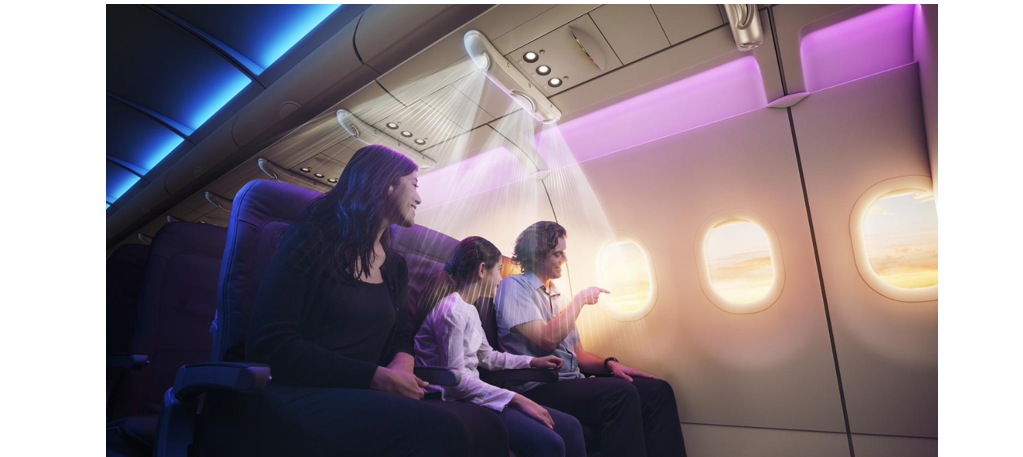
The COVID-19 pandemic has devastated public transportation of every variety from buses and taxis to airplanes and trains. The combination of remote work and evolving economic shutdowns impacting restaurants, entertainment venues, schools, and tourism have sapped transportation demand while mitigation measures have reduced supply.
Restoring the supply of transportation as economies emerge from the coronavirus crisis in the wake of widespread vaccine deployment will call for a corresponding restoration in confidence. Returning public transportation users on trains and planes and other means of conveyance will be looking for accomodations intended to combat present and future viral transmission among passengers. Many bus drivers, for example, have seen protective barriers installed.
Much has been made of research studies showing the prophylactic effect of airflow in taxis, trains, buses and airplanes. But these studies tend to look at the prevailing airflow – normally ceiling-to-floor and front-to-back in shared transit situations – the nature of air filtration and the frequency of cabin air replacement. (Taxis or shared cars are more complicated.)
Some of these studies consider the disruption of the prevailing airflow due to the presence and movement of human beings – the passengers and/or attendants. Little effort has gone into actually modifying the airflow in order to use it as a more active defense against viral transmission.
Airshield, a retrofit device for airplanes, is intended to actually use airflow as a barrier to viral transmission in airplanes. Developed by Teague, a design firm focused on user experiences in the transportation industry, Airshield is intended as an inexpensive adaptation of existing cabin air exchange systems to provide individualized and inobtrusive protection to airplane passengers – even those sitting in close proximity.
I have flown three domestic flights since the onset of the pandemic. I can personally attest to the fact that flights during the COVID-19 pandemic are almost universally completely full and the airlines have done little to modify the in-cabin experience to inspire passenger confidence.
The airline I fly most frequently is United, United touts its award winning United CleanPlus program saying: “United is the first airline among the four largest U.S. carriers to be awarded Diamond status by APEX Health Safety powered by SimpliFlying for our cleanliness and sanitation efforts.”
United CleanPlus addresses the cleanliness of the airplane. It does not address the real threat of airborne viral transmission in flight.
United is not alone. The manufacturers of the airplanes themselves appear to be in a bit of denial. Writes Boeing:
“What happens when someone coughs next to other passengers on an airplane? New Boeing research shows the cabin environment significantly reduces and removes those cough particles from the air.
“In fact, Boeing researchers say the design of the cabin and the airflow system create the equivalent of more than 7 feet (2 meters) of physical distance between every passenger—even on a full flight. The findings, along with the use of face coverings, enhanced cleaning and other safeguards lower the risk of passengers contracting COVID-19 during air travel.”
Boeing’s claims fly in the face of existing research. Notes a comment on the MIT Medical Website:
“Still, the design of air-handling systems on commercial aircraft makes it unlikely that you’ll be breathing in air from anyone more than a few rows away. In fact, a 2018 study that examined the transmission of droplet-mediated respiratory illnesses during transcontinental flights found that an infectious passenger with influenza or another droplet-transmitted respiratory infection was highly unlikely to infect passengers seated farther away than two seats on either side or one row in front or in back.”
These findings do not inspire confidence. The real missing piece, of course, is research into infections traceable specifically to the flights themselves – especially given the challenges of segregating the behaviors and conditions associated with getting to and from the airplane itself.
It would be nice, though, to know and see active mitigation measures in place in airplanes. Teague’s Airshield offers that solution. Like other researchers, Teague has studied and modeled the airflow on airplanes and identified weaknesses in the current configurations of systems not intended to actually combat an actual pandemic.
SOURCE: Teague illustration of existing unmodified airflow on a Boeing 737
Teague’s analysis can be found here: https://teague.com/work/airshield-cabin-air-safety-device
Teague claims a 76% reduction in shared air particles with Airshield. The company also claims its own studies show that 86% of passengers would choose to fly on a plane with Airshield over one not so equipped.
SOURCE: Teague illustration of Airshield installation.
Airshield itself requires a two minute insallation over existing air vents, according to the company. I personally expect there are ways to implement Airshield in other forms of public transportation – though airplanes are most ideally suited to its adoption. For me, if nothing else, the adoption and installation of Airshield can demonstrate an active effort at affording some level of safety for airline travel.
There is still widespread fear of flying, especially given the reality that many passengers are known to be traveling while infected. No level of airplane sanitation can prevent transmission in a closely contained environment where air is more or less freely exchanged. Actively using airflow as a physical barrier is a measure engineers at Teague are putting at our disposal with Airshield. It seems like a good idea to me. (Disclosure: Teague is not a Strategy Analytics client.)
Share this post via:







Flynn Was Right: How a 2003 Warning Foretold Today’s Architectural Pivot